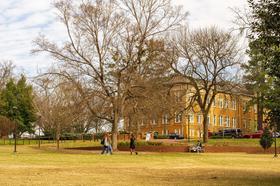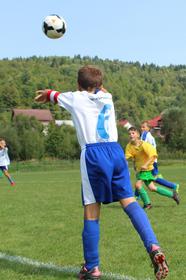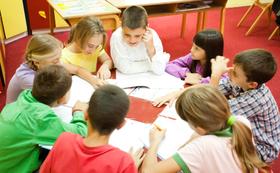Top Rankings
Carson City School District ranks among the top 20% of public school district in Nevada for:
Category
Attribute
Graduation Rate
Highest graduation rate (Top 20%)
For the 2025-26 school year, there is 1 public charter school serving 297 students in Carson City School District. This district's average charter testing ranking is 6/10, which is in the top 50% of public charter schools in Nevada.
Public Charter School in Carson City School District have an average math proficiency score of 32% (versus the Nevada public charter school average of 41%), and reading proficiency score of 52% (versus the 54% statewide average).
Minority enrollment is 35% of the student body (majority Hispanic), which is less than the Nevada public charter school average of 72% (majority Hispanic).
Overview
This School District
This State (NV)
# Schools
14 Schools
105 Schools
# Students
7,484 Students
70,681 Students
# Teachers
435 Teachers
2,250 Teachers
Student-Teacher Ratio
18:1
18:1
Student By Grade
District Rank
Carson City School District, which is ranked within the top 50% of all 19 school districts in Nevada (based off of combined math and reading proficiency testing data) for the 2022-2023 school year.
The school district's graduation rate of 88% has increased from 86% over five school years.
Overall District Rank
#7 out of 20 school districts
(Top 50%)
(Top 50%)
Math Test Scores (% Proficient)
30%
30%
Reading/Language Arts Test Scores (% Proficient)
44%
44%
Science Test Scores (% Proficient)
32%
26%
Graduation Rate
88%
82%
Students by Ethnicity:
Diversity Score
0.59
0.73
% American Indian
2%
n/a
% Asian
2%
8%
% Hispanic
47%
40%
% Black
1%
13%
% White
43%
28%
% Hawaiian
n/a
2%
% Two or more races
5%
9%
All Ethnic Groups
District Revenue and Spending
The revenue/student of $13,389 is higher than the state median of $12,085. The school district revenue/student has stayed relatively flat over four school years.
The school district's spending/student of $13,011 is higher than the state median of $12,248. The school district spending/student has stayed relatively flat over four school years.
Total Revenue
$100 MM
$5,795 MM
Spending
$97 MM
$5,873 MM
Revenue / Student
$13,389
$12,085
Spending / Student
$13,011
$12,248
Best Carson City School District Public Charter Schools (2025-26)
School
(Math and Reading Proficiency)
(Math and Reading Proficiency)
Location
Quick Facts
Rank: #11.
Carson Montessori
Charter School
(Math: 30-34% | Reading: 50-54%)
Rank:
Rank:
7/
Top 50%10
2263 Mouton Dr.
Carson City, NV 89706
(775) 887-9500
Carson City, NV 89706
(775) 887-9500
Gr: K-6 | 297 students Student-teacher ratio: 20:1 Minority enrollment: 36%
Recent Articles

School Vouchers 2025: Updated Pros and Cons
A 2025 update on school vouchers, including benefits, drawbacks, enrollment trends, and how vouchers affect public and private education.

The Role of Arts in Public Schools (2025 Update)
Explore why arts education remains vital in U.S. public schools, with updated data, new policy context, and insights for parents, students, and educators.

The Role of Sports in Public Schools in 2025
How sports in public schools shape learning, health, and community in 2025, with updated data, trends, and expert insights.





